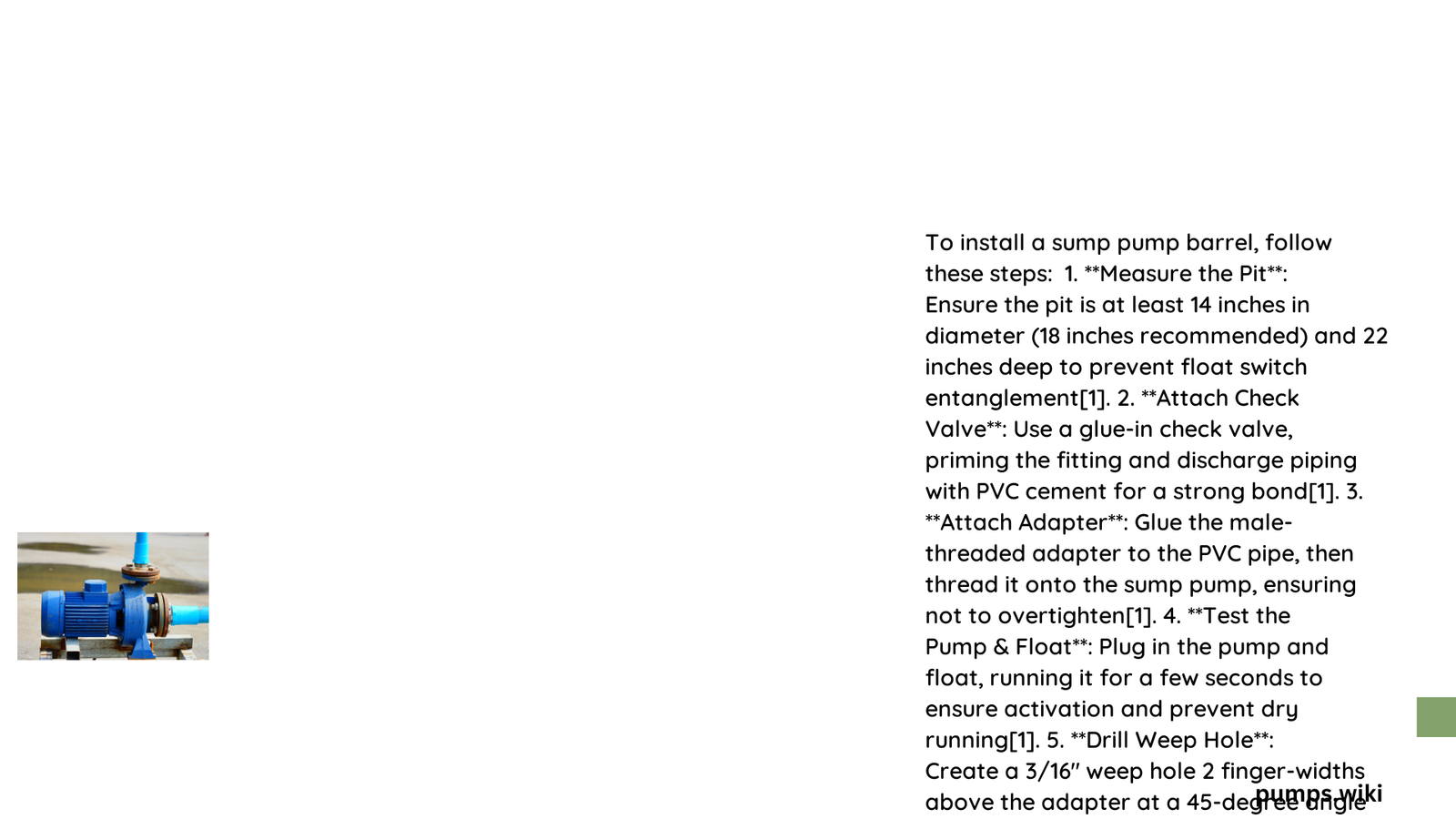Sump pump barrel installation is a critical home infrastructure project that protects your property from water damage by efficiently managing groundwater and preventing basement flooding. Proper installation requires precise measurements, strategic placement, and understanding of drainage dynamics to create an effective water management system that safeguards your home’s foundation and living spaces.
What Are the Essential Dimensions for Sump Pump Barrel?
Selecting the right dimensions for your sump pump barrel is crucial for optimal performance. Standard specifications typically include:
| Dimension | Typical Range |
|---|---|
| Diameter | 18-24 inches |
| Depth | 22-36 inches |
| Capacity | 1-2 gallons per inch |
Why Does Barrel Size Matter?
The barrel size directly impacts your pump’s efficiency. A properly sized barrel ensures:
- Adequate water collection
- Prevents frequent pump cycling
- Reduces potential mechanical stress
- Minimizes potential overflow risks
How to Prepare for Sump Pump Barrel Installation?

Preparation involves several critical steps:
- Site Assessment
- Evaluate basement/crawl space terrain
- Identify lowest ground point
- Check water table levels
-
Determine drainage patterns
-
Tools Required
- Tape measure
- Shovel
- Level
- PVC pipes
- Gravel
- Concrete mix
- Safety equipment
What Are the Key Installation Techniques?
Excavation Process
- Mark precise installation area
- Dig hole matching barrel dimensions
- Ensure level bottom surface
- Create slight slope for water drainage
- Add 3-4 inches gravel base for drainage
Barrel Placement Strategies
- Center barrel in designated area
- Maintain minimum 10-inch clearance from walls
- Ensure top rim sits slightly above floor level
- Use waterproof sealant around edges
How to Connect Discharge Mechanisms?
Discharge pipe configuration requires careful planning:
- Minimum 1.5-inch diameter pipe
- Use non-corrosive materials (PVC/ABS)
- Create gradual slope away from foundation
- Install check valve to prevent backflow
- Consider local building code requirements
What Maintenance Considerations Exist?
Regular maintenance ensures long-term performance:
- Inspect barrel quarterly
- Clean debris periodically
- Check float switch functionality
- Test pump operation
- Verify discharge pipe remains unobstructed
Pro Tips for Successful Installation
- Use high-quality, submersible pump
- Install backup battery system
- Consider professional consultation
- Obtain necessary permits
- Document entire installation process
Common Mistakes to Avoid
- Improper slope configuration
- Inadequate gravel base
- Incorrect pipe sizing
- Neglecting local building codes
- Poor waterproofing techniques
Cost Considerations
Installation costs typically range:
– DIY: $500-$1,000
– Professional: $1,000-$3,000
Factors influencing price include:
– Basement accessibility
– Soil conditions
– Pump horsepower
– Additional waterproofing needs
Conclusion
Successful sump pump barrel installation requires meticulous planning, precise execution, and ongoing maintenance. By understanding critical dimensions, following professional techniques, and investing in quality components, homeowners can create robust water management systems that protect their property for years.
Reference:
– Water Commander Sump Pit Guide
– High 5 Plumbing Sump Pump Insights
– Big Frog Supply Pump Sizing Guide
